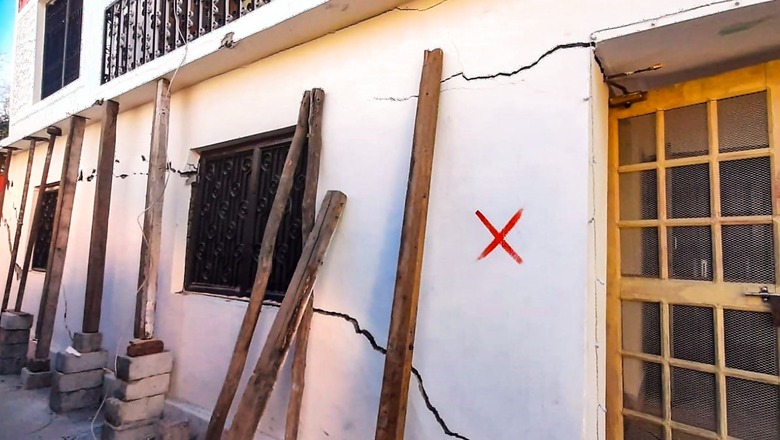
views
A ground survey by a four-member expert team from Uttarakhand’s state-run Sri Dev Suman Uttarakhand University has revealed that the cracks in Joshimath are up to 2 feet wide and half-a-km long”.
According to a report in the Times of India, this is the first time when the government officials publicly disclosed the dimensions of the cracks, revealing how dangerous the area is at present.
The committee that assessed the ground situation, was formed by the university. The experts studied the fissures between January 25 and 28 and submitted the findings to to university vice-chancellor M S Rawat on Tuesday.
The report will now be handed over to the Uttarakhand government. The report stated that the panel included D C Goswami, professor of geography, Krishna Goswami and Arvind Bhatt, assistant professors of geology.
“In Manohar Baag, the cracks were as wide as 2 feet, enough for a person to stand inside one, and extended till 300m in open areas and up to half-a-km in areas where there are constructions,” Shrikrishna Nautiyal, another panel member who is a geologist, was quoted as saying to TOI.
“This particular spot is in the heart of Joshimath town near the ropeway. It was filled up but when we investigated the site, the cracks had reappeared,” he added.
While sharing some of the finding, the members said that “natural and anthropogenic pressure, including NTPC’s tunnel boring machine, led to a large amount of water leakage”. NTPC has, however, strongly refuted its role.
The committee also said that this year’s monsoon will play an important role in deciding the future course of action for Joshimath.
“It is the ‘load bearing capacity’ of the town that needs to be reduced. The area is formed of loose unconsolidated glacial material over a 40-degree slope. Any kind of pressure on this landscape would only lead to further subsidence,” the committee members told the news website.
Also Read: Disaster Control Room to Be Set Up, BRO Team Deployed in Joshimath for Char Dham Yatra


















Comments
0 comment